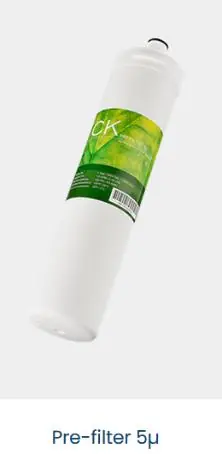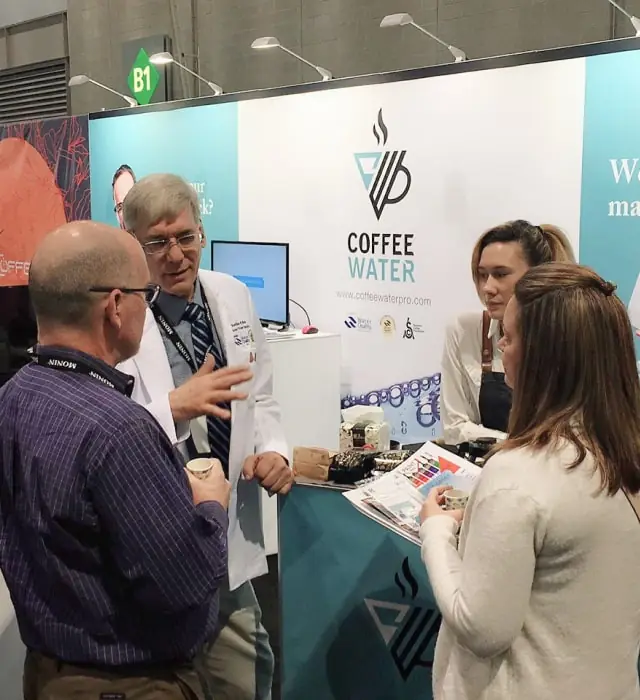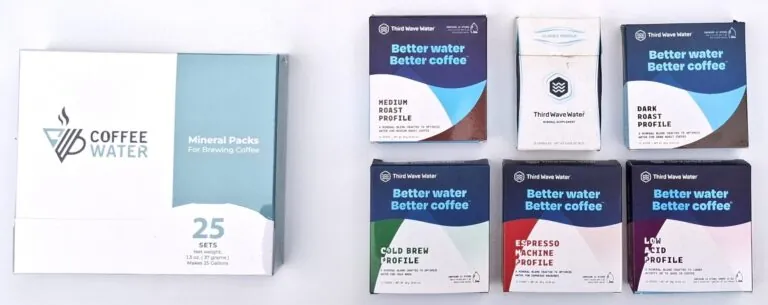Great Drinking Water Can Make Great Water for Brewing Coffee
Choosing the right water is crucial for brewing the perfect cup of coffee. Reverse osmosis (RO) filtered water provides a clean slate, free from impurities that can alter the taste of your brew. By starting with RO water and adding Coffee Water minerals, you can tailor the water to meet the ideal standards to meet your taste.
If you have an RO filter system, you are already enjoying great tasting and healthy drinking water. So what exactly is an RO filter system and how is it able to make this great tasting water?
After using a five stage RO system for over 25 years I won’t change. Here’s why.

Shortly after moving to Asia, we faced the problem of trying to find good drinking water. Fortunately, while in Taiwan, my wife met Morgan Yang, the owner of Puricom, an international manufacturer of reverse osmosis water filters, and he agreed to donate RO filter systems to the three schools we were helping.
Link – https://www.puricom.com/en
This was my first introduction to reverse osmosis, but having a background in biology, I understood the concept of this new technology right away. Little did I realize at that time that this friendship with Morgan, combined with my biology major background, would lead to a much deeper understanding of water filtration and representing Puricom at water industry trade shows around the world.
So, why have I continued to use an RO system for over 25 years without changing? The answer lies in two simple reasons: First, the water tastes awesome. Second, and probably even more important, I know that the water is free of any contaminants and, therefore, is as healthy as you can get.

What is Reverse Osmosis?
The core of reverse osmosis system is the very fine, semi-permeable RO membrane. Water is forced through this membrane under pressure, leaving larger molecules, dissolved solids (like salts), and contaminants behind. Only water molecules are small enough to pass through, resulting in very pure water.
You can find more detailed information about RO membrane technology on the web if you want a deeper understanding, but let’s get to the main point of this article.
Why Do most RO Filter Systems Have Five Stages? What Does That Mean?
Although the RO membrane is the heart of the system for removing contaminants, the membrane itself is very delicate and sensitive to physical and chemical damage. While the first three stages of the system filter out much of the contaminants, their main purpose is to remove anything from the water that could damage the membrane. Here is why there are three stages before the membrane.
Stage 1: Polypropylene (PP) Pre-filter: Sediment Removal

This filter is made of a very fine mesh material that physically strains any sand, dirt, or other particles that could damage the membrane by scratching or plugging it. As the front line of the filtering process, this filter is the first to get plugged up and therefore needs to be replaced most often. By filtering out dirt and sediment, it also protects the second stage—the carbon filter—from getting clogged with sediment, reducing the need for frequent replacements.
Stage 2: Activated Carbon Filter: Chlorine and Chemical Removal

The RO membrane is very sensitive to chemical deterioration from chlorine. If exposed to chlorine, the chlorine will very quickly deteriorate the membrane’s polyamide surface. Because chlorine is added to nearly all municipal water, it is essential that it be removed. If not removed, the chlorine could deteriorate the RO membrane in as little as six months or less. The activated carbon filter removes this chlorine.
Activated carbon is a very fine porous material that acts like a micro-sponge. Water can flow through this sponge-like structure, and chlorine and other organic molecules will be adsorbed onto the surfaces of the carbon. Eventually, the surfaces of the carbon will be completely covered and no longer able to absorb chlorine. Therefore, it is extremely important to change the carbon filter regularly at the recommended time.
There are two common types of carbon filters: Granular Activated Carbon (GAC), which consists of loose granules through which the water flows, and Carbon Block, which is made of finer carbon particles mixed with an adhesive to form a porous ‘block’ through which the water can flow.


Stage 3: Fine Polypropylene (PP) Filter: Fine Sediment Removal

The activated carbon in the second stage may have fine particles that flake off, which could scratch the membrane. The third-stage PP filter, finer than the first stage (usually 1 micron), will remove any fine particles of carbon, as well as any other particles that may have passed through the first stage.
If the first three stages are properly maintained and changed on time, the RO membrane will usually last for 5 years or more. However, proper and timely filter changes are important.
Stage 4: RO Membrane
This is the stage that removes the bulk of chemicals and other contaminants from the water, down to a molecular level. It works through a combination of both physical separation and an electrostatic barrier on the surface of the membrane. This barrier is actually only a very thin coating of material on the surface of a multi-layered filter sheet. As water flows over the surface of the membrane, only the smaller water molecules can pass through the membrane. The polar electrostatic charge that pushes ions and polar molecules away from the surface of the membrane also helps to prevent the membrane from clogging.

Stage 5: Post Filter

Because the RO filtering process is fairly slow, traditional RO systems collect the pure water in a storage tank. This tank has low pressure (typically 5 to 20 psi), which is low enough to prevent too much back pressure on the membrane, but high enough to provide a good flow to the faucet. Since these tanks usually have a rubber bladder inside, there is a possibility of the water taking on an off taste if stored for an extended period. To ensure that the water going to the faucet is perfectly clean, a post-carbon filter between the tank and the faucet will ‘polish’ the water to make sure it is perfectly clean and great tasting.
In addition to carbon for polishing the water, the post filter may contain calcium or magnesium granules to reintroduce these healthy minerals back into the water. This will also improve the taste of the water.
The Total Picture
Each stage of a 5-stage reverse osmosis (RO) system plays a vital role in ensuring the production of high-quality drinking water. The sequence of stages works together to protect the system’s integrity and enhance water purity, making it crucial that no stage be omitted.
While a five-stage system provides comprehensive water treatment, there are RO systems available with six or more stages. These additional stages can offer further enhancements to water quality, such as additional mineralization or advanced contaminant removal, and should be evaluated based on the specific benefits they bring to the overall system.
Benefits of Reverse Osmosis (RO)
We highly recommend the use of a Reverse Osmosis (RO) filter as the most cost-effective method to obtain pure and great-tasting water, which is essential for brewing the best coffee. When you opt for RO water, you can be confident that your water will be free from contaminants that might impart any unusual or undesirable tastes to your coffee.
Another viable option is using distilled water, which will yield similar results in terms of purity and taste. The only reason we haven’t suggested it as a home solution is due to the cost of having to purchase distilled water, or the considerable energy costs associated with home distillation systems, making them less practical.
De-ionization is another method for removing ions from water, but it is a more complex and technically involved process. It is not typically used for household purposes, especially with water that has a high mineral content, as the expense of replacing filters or de-ionizing resin can be significant. However, de-ionization can produce extremely pure water when used in conjunction with an RO filter.
Regardless of whether you choose RO, distilled, or de-ionized water, when you add COFFEE WATER minerals to it, you will achieve nearly identical results when brewing coffee.
The Joy of Sharing Pure, Great-Tasting Water
Besides enjoying the health benefits and great-tasting water ourselves, we often have guests tell us how great our water tastes and ask us why. We have even had some come to fill up their water jugs from our system, which we are happy to do. (It is a great way to get friends over.) That is why, after using a five-stage RO system for over 25 years, I won’t change.






